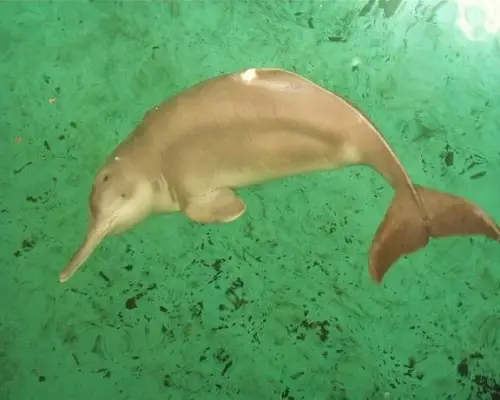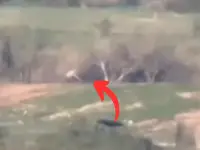Sadly environmental change and human influence has seen one too many animals fall into extinction. From excessive hunting, to the spread of disease and the introduction of foreign species, we can see how easy it is to disturb the precarious balance of nature. So join us as we pay homage to a few choice animals that have sadly become extinct in recent times.
The Quagga

The Quagga is an extinct subspecies of the Plains Zebra that lived in South Africa. It was distinct from other zebras because of its unique pattern coverage. The famous zebra stripe only ran the length of its head and neck, while the rear half was plain brown. This poor beast was heavily hunted throughout South Africa as it competed with other domesticated animals for food. The last wild population of Quagga lived in Orange Free State and was officially declared extinct in the wild in 1878. The last captive Quagga died in Amsterdam on the 12th August 1883.
The Western Black Rhinoceros

This majestic beast was once most commonly found in the south east regions of Africa until it was officially declared extinct in 2011. For the majority of the 1900s it was thought to be the most populated of all the Rhinoceros species until a 96% decrease in numbers was reported from 1970 to 1992. Widespread poaching is attributed as the main reason for extinction of the Western Black Rhinoceros.
Levuana Moth

While you may think the disappearance of a moth subspecies isn’t all that interesting, what is fascinating is the controversy surrounding its extinction.
In 1877, this small purple moth became a serious pest on the island of Viti Levu, Fiji. During the larval stage of growth the Levuana Moth would feast on coconut tree foliage so much so that it became a serious problem for the local people, impacting on their livelihoods. In 1925 Canadian entomologist John Douglas Tothill proposed to introduce a Malaysian fly species, Bessa Remota, that would curb the escalating moth numbers. The program was so successful that the Levuana Moth has not been seen for many decades. The controversy from such a targeted and premeditated decimation of a species raises the question: what is more important, the livelihood of the local island people or the protection of a rare species of moth only found in one place on earth?
Pyrenean Ibex

The Pyrenean Ibex was a subspecies of the Iberian Wild Goat and was mostly found throughout the northern Pyrenees and the Cantabrian Mountains in the south of France. A number of factors played a role in its extinction such as excessive hunting, disease and competition with other animals for food.
On October 8, 2000 a cloning project attempted to duplicate the Pyrenean Ibex back into existence. The last surviving member of this subspecies named Celia was used for tissue samples before she was found dead, crushed under a fallen tree. After many failed attempts, scientists were able to successfully birth one clone but due to lung defects it only lived for 10 minutes. The Pyrenean Ibex is the first subspecies to have been revived from extinction, albeit for the briefest of moments.
The Baiji

A freshwater dolphin once found in the Yangtze River in China was recently declared ‘functionally extinct’ meaning there has been no sightings for many years. Seen as a symbol for peace and prosperity, the Baiji was known at the ‘goddess of the Yangtze’ and populated the area as far back as 3rd century BC. Numbers decreased dramatically from the 1960s onwards with many factors attributed to their extinction such as: hunting, entanglement in fishing nets, pollution and habitat loss. In 2006, a six-week expedition on the Yangtze was conducted to try and find the dolphin but no sightings were made raising fears of irrefutable extinction.
The Caspian Tiger

A beautiful subspecies of tiger that once roamed south of the Caspian Sea, through Iran, central Asia and as far east as China. Slightly smaller in size than the famous Siberian tiger, with males exceeding 200 cm and weighing up to 240kg. Once commonly found around rivers and lakes, their diets consisted mainly of wild pig and deer but were known to feast on gazelle, jackals, jungle cats and even locusts. Sadly numbers began to decline with the expansion of Russia in the late 19th century. Up until World War 1 the Russian army was used to clear predators from local forests, putting pressure on the Caspian Tiger population. Their habitat also changed rapidly as large expanses of land were being converted into cotton plantations. Measures were put in place to try and save the Caspian Tiger but excessive hunting saw this majestic creature fall into extinction in the early 1970s.
Thylacine

Most commonly known as the Tasmanian Tiger, this predatory marsupial was once found throughout mainland Australia, Tasmania and New Guinea. The Thylacine resembled a stiff-tailed dog with stripes running over its hind quarters, with both sexes having pouches.
Thylacine populations became very rare or extinct on mainland Australia some 2000 years ago, well before British settlement. It is thought that indigenous humans and invasive dingo populations were attributed to their extinction on the mainland. The species did continue to survive throughout Tasmania. However poor conservation efforts and rampant hunting saw the last Thylacine die in captivity in Hobart Zoo on the night of 7th of September 1936. Sightings are still reported throughout mainland Australia and Tasmania, even large rewards of up to 1.75 million dollars have been offered but no conclusive evidence of the survival of the species has ever been found.
Pinta Island Tortoise

This is the late Lonesome George, a beautiful old beast and potent reminder of the importance of conservation. First discovered in 1971 by Hungarian malacologist József Vágvölgyi, Lonesome George was the last known Pinta Island Tortoise, a subspecies once found in the Galapagos Islands. Pressure was put on the tortoise habitat after introduced feral goats decimated the local vegetation, leaving ole mate George as the last surviving progeny of his species. In his final years, he was known as the rarest creature in the world, until sadly he passed away on June 24 2012 leaving the Pinta Island Tortoise officially extinct.






